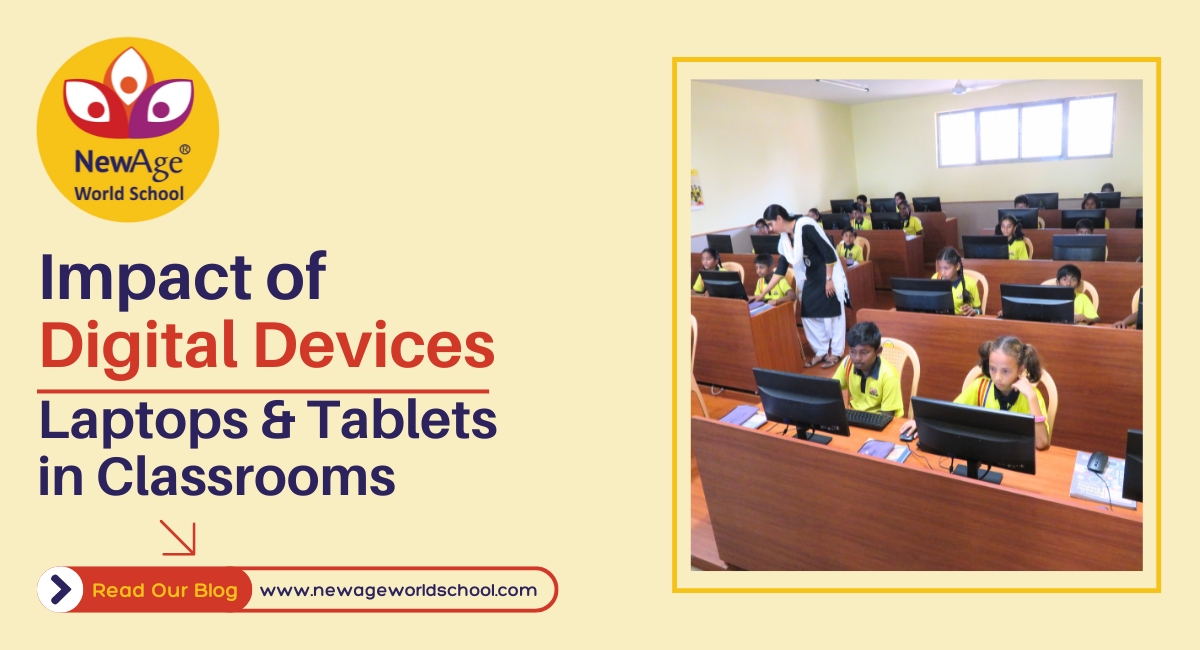

1. Introduction
2. Benefits of Digital Devices in Learning
3. Drawbacks of Digital Devices in Learning
4. Conclusion
5. FAQs
The rise of technology has reshaped the way we live, work, and learn. It's no surprise that schools in Bangalore, especially the progressive ones, are embracing digital devices in education. From interactive smart classrooms to personalized learning, tools like laptops and tablets in classrooms have become a common sight. However, this digital shift also raises questions about their effectiveness and challenges.
In this article, we will explore both the advantages and disadvantages of digital devices in schools, focusing on how they impact learning. We'll also share tips for schools, such as schools in Yelahanka, to integrate these tools successfully. Let's take a closer look at the benefits and drawbacks of digital devices in schools and see how they shape education today.
Gone are the days when students spent hours in libraries searching for books. With laptops and tablets in classrooms, students can access a world of information instantly. Whether it's an e-book, a research article, or live updates on current events, the internet opens endless opportunities for learning.
This is particularly helpful in places like schools in Yelahanka, where students can connect with resources globally without limitations. Digital devices promote independent learning and foster critical thinking, encouraging students to explore beyond the classroom.
One of the biggest advantages of technology in schools is its ability to foster teamwork. Students can use digital tools for student collaboration, like shared documents, video calls, and discussion platforms. Whether it's a group project or a quick brainstorming session, these tools break physical barriers and allow seamless interaction. Such features prepare students for the digital workspaces they'll encounter in the future.
Every child learns differently. Digital devices in education offer adaptive software and apps that cater to each student's needs. For instance, some students benefit from videos and animations, while others prefer quizzes and simulations. These tools make learning more fun and interactive. In fact, interactive smart classrooms in ICSE schools in North Bangalore are proof of how digital devices can transform traditional teaching into something engaging and enjoyable.
Also Read: Smart Classrooms vs Traditional Classrooms: A Detailed Comparison
While the internet is a treasure trove of knowledge, it's also a source of endless distractions. Students may find themselves scrolling through social media or playing games instead of focusing on their lessons. Managing screen time in schools becomes a real challenge for educators who need to ensure students stay on track.
Not every student has access to laptops or tablets outside school hours. This creates a gap between those who can use these devices freely and those who cannot. International Schools in Yelahanka and elsewhere must find ways to bridge this digital divide, ensuring every child has an equal opportunity to learn. Financial assistance programs or school-provided devices can help address this issue.
Prolonged screen time can lead to health effects of digital learning tools, such as eye strain, headaches, and poor posture. Moreover, students glued to screens may lose out on face-to-face interactions, which are crucial for building interpersonal skills. Striking the right balance between digital and traditional teaching methods is essential to maintain student well-being.
In a world where technology is deeply intertwined with education, the use of laptops and tablets in classrooms is inevitable. They bring numerous benefits, such as fostering collaboration, improving engagement, and providing instant access to information. However, they also come with challenges, including distractions, health concerns, and unequal access.
For schools in Bangalore, especially in regions like Yelahanka, the key lies in adopting a balanced approach.
By setting clear guidelines, training teachers, and promoting internet safety for students, schools can maximize the potential of digital devices in education while minimizing the drawbacks. Traditional teaching methods should also be preserved, ensuring students develop critical thinking skills and personal connections.
Educating students on internet safety for students protects them from online risks and ensures they use digital tools responsibly.
Providing devices for classroom use or offering financial assistance programs can help bridge the digital divide in ICSE schools in North Bangalore.
The health effects of digital learning tools include eye strain, headaches, and poor posture if screen time isn't managed properly.
Schools can set clear usage guidelines, limit screen time during non-essential activities, and educate students on responsible device use.
Digital devices improve access to information, encourage collaboration, and offer personalized learning experiences in smart classrooms.
Leave a Reply
Your email address will not be published. Required fields are marked *
Comments
No comments available